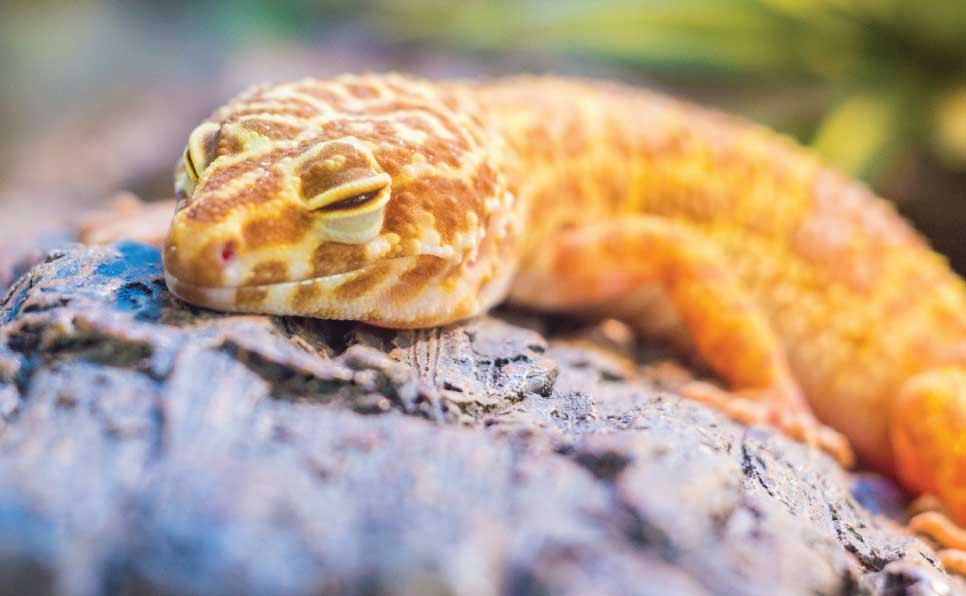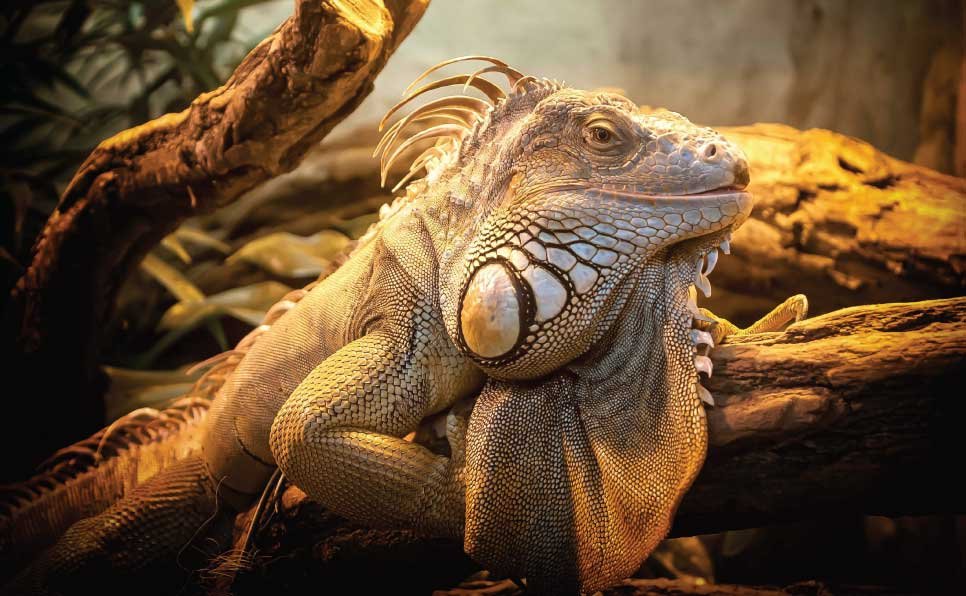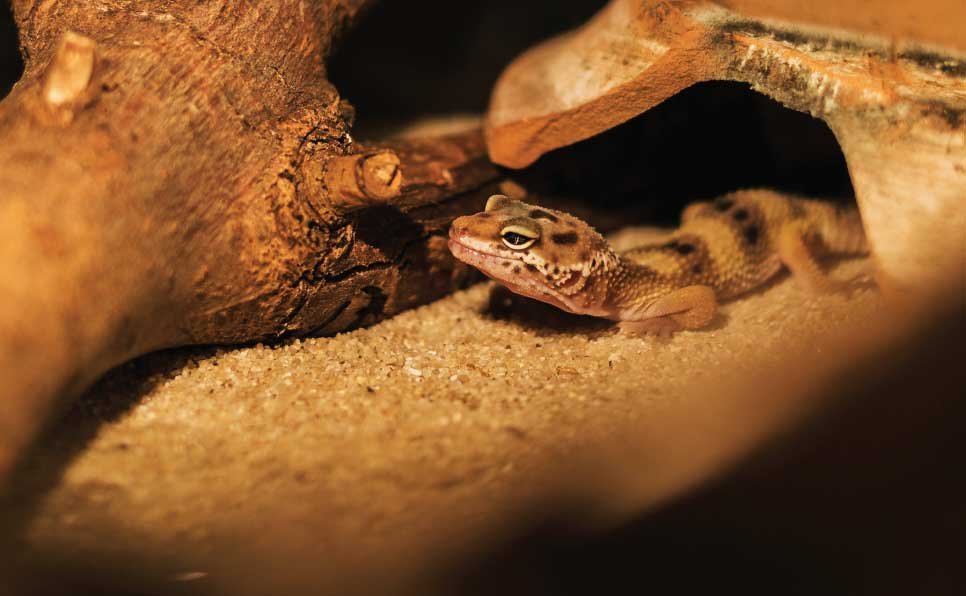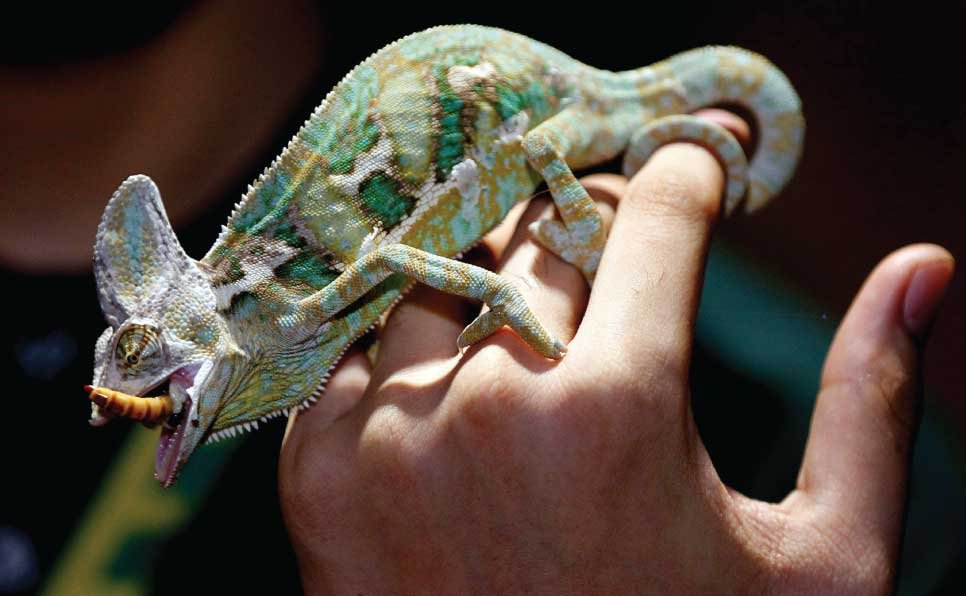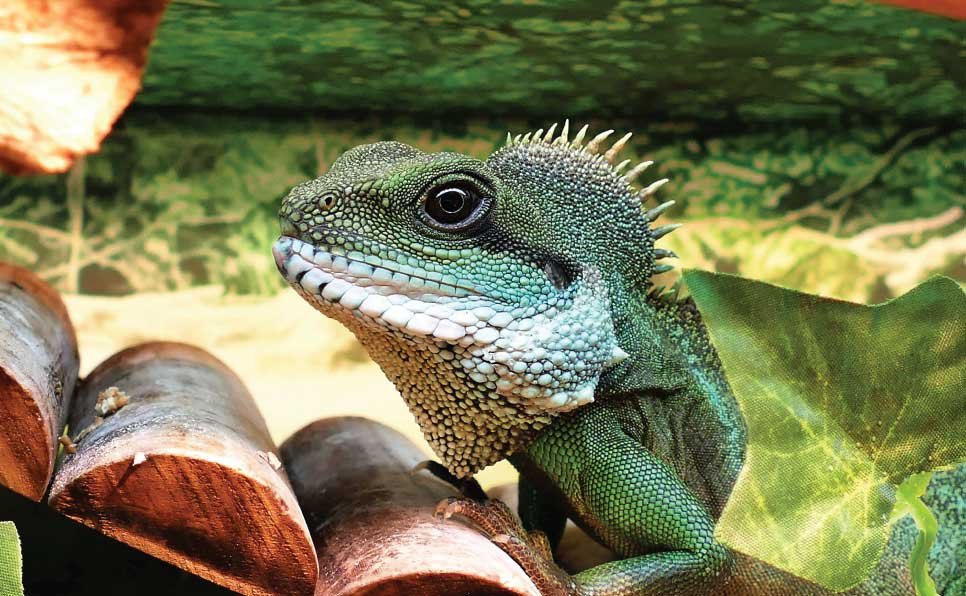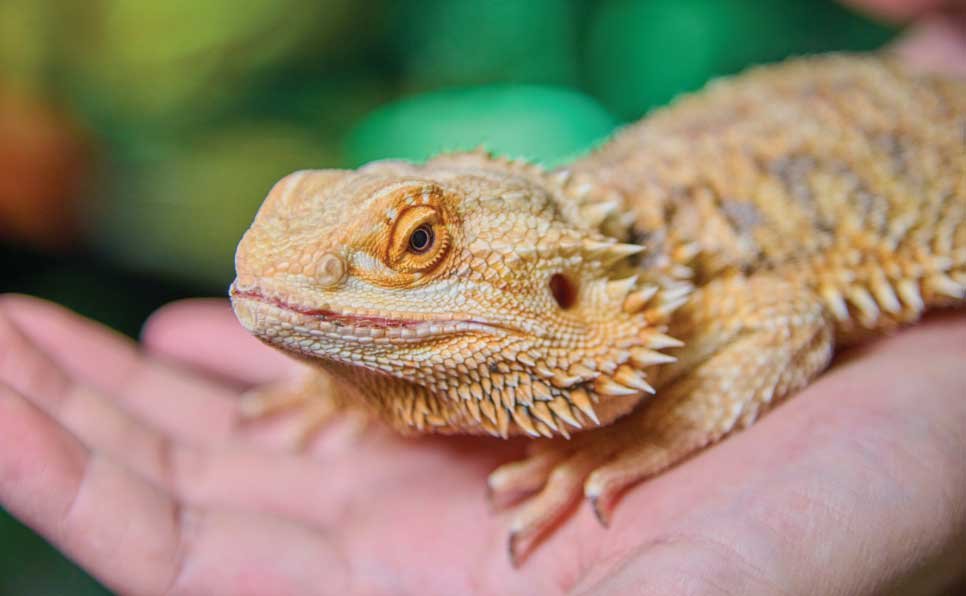My bearded dragon nearly died because I thought sand looked “natural.” The emergency vet bill? $200. The guilt? Priceless. And I’m not alone, I’ve since learned that 67% of reptile health issues stem from poor habitat setups.
That terrifying moment when I realized my “perfect” desert setup was actually a death trap taught me something crucial: setting up a reptile enclosure isn’t just a weekend project, it’s the foundation of your pet’s entire life. Every bulb, every hide, every grain of substrate matters more than you might think.
I created this guide so you can skip the rookie errors that nearly cost me my scaly friend. Because your reptile deserves better than my early mistakes, and you deserve to feel confident in the home you’re building for them.
Skipping Proper Research on Species Needs
Picture this: I’m standing in the pet store, completely smitten with a leopard gecko’s spotted beauty, thinking, “How hard could this be? A tank, a heat lamp, some food, done!” The confidence was real. The knowledge? Not so much.
Two weeks later, my little guy was hiding constantly, barely moving, and I was panicking. Turns out, leopard geckos don’t actually need UVB lighting like other reptiles do. I had built him a setup better suited for a bearded dragon. The poor thing was probably wondering why his new home felt so wrong.
Here’s what hit me: every reptile species is like its own universe with unique rules. A crested gecko thrives in a humid, vertical jungle gym with plants to climb and mist to breathe. Meanwhile, a corn snake wants open floor space and bone-dry conditions. When I tried using the same heating method for both my gecko and my new corn snake, the temperatures were completely wrong. My snake refused to eat for days, and I spent sleepless nights wondering what I’d done wrong.
That’s when I dove deep, forums, care sheets, even awkward emails to reptile vets at midnight. I discovered that some reptiles need humidity levels of 70% or higher, or they’ll suffer painful shedding issues and respiratory infections. Others, like desert species, need arid environments and intense UVB to mimic their natural sun-baked homes.
The biggest trap? Those convenient “starter kits” at pet stores. They look perfect, everything you need in one box! But they’re usually generic packages that don’t meet any specific reptile’s needs. Wrong bulb strength, too-small tanks, inappropriate accessories. It’s like buying a one-size-fits-all wedding dress and expecting it to be perfect.
Now, before any new reptile comes home, I spend at least a week researching their native habitat. I study humidity levels, temperature ranges, behavioral patterns, and even what kind of decor makes them feel secure. Some reptiles need multiple hiding spots; others are climbers who crave vertical space. My friend created a living rainforest for her day gecko, it’s absolutely stunning and perfectly tailored to her pet’s needs.
Your scaly buddy isn’t just living décor in a glass box, they’re a complex creature with specific needs that took millions of years to evolve. Taking time to understand them isn’t just responsible; it’s part of the joy of reptile keeping.
Using Inappropriate Substrate
Let me be brutally honest, I nearly killed my bearded dragon with sand because I wanted his tank to look like a Pinterest-worthy desert oasis. The sand looked so natural, so perfect for photos. What I created instead was a ticking time bomb.
Within a month, my dragon had stopped pooping entirely and looked uncomfortably bloated. The diagnosis? Impaction. He’d been accidentally swallowing sand while eating, and it had clogged his digestive system like concrete in a pipe. The vet bill stung, but watching my pet suffer because of my ignorance? That was devastating.
If you’re new to this, impaction happens when reptiles accidentally ingest substrate, usually while hunting food near the ground. It’s not just sand, either. Crushed walnut shells, wood shavings, small gravel, they’re all marketed as “natural” or “eco-friendly,” but they become lethal the moment your reptile accidentally swallows them while eating.
The cruel irony? Impaction is 100% preventable. I spent over $200 at the emergency vet because I didn’t want to use “ugly” ceramic tiles. Yeah. Let that sink in.
So what’s actually safe? For beginners, I always recommend reptile carpet, it’s virtually impossible to ingest and easy to clean. If you’re handy, ceramic tiles are fantastic. They look clean, retain heat beautifully, and pose zero impaction risk. Some keepers use plain paper towels for hatchlings or quarantined animals. Simple, cheap, and completely safe.
Then there’s the advanced option that makes my heart sing: bioactive setups. I built one for my crested gecko last year, and it’s like having a tiny ecosystem. You layer organic soil, clay, moss, and leaf litter, then add live plants and clean-up crews like springtails and isopods. It’s gorgeous and naturally maintains itself. Just make sure you understand drainage layers and plant compatibility, or you’ll end up with a swampy mess.
Bottom line? Don’t choose substrate based on Instagram aesthetics. Choose it based on what keeps your reptile alive and healthy. The right flooring might not win design awards, but it can save your pet’s life, and that’s infinitely more important than any photo opportunity.
Incorrect Temperature & Lighting Setup
This mistake still makes my stomach drop because it’s so common and completely avoidable. When I brought home my first ball python, I confidently placed one heat lamp in the center of his tank, dusted off my hands, and called it done. I had no clue about temperature gradients, basking spots, or how reptiles actually survive.
My poor snake had no way to properly warm up for digestion… or cool down when he got too hot. I essentially trapped him in thermal limbo.
Here’s the thing: reptiles are ectothermic, which means they rely completely on external heat sources to power every bodily function. Without a proper temperature gradient, a warm basking side and a cooler retreat side, they can’t thermoregulate. This doesn’t just affect comfort; it shuts down their digestion, weakens their immune system, and can literally be life-threatening.
And please, learn from my friend’s painful lesson with heat rocks. They seem convenient, but they concentrate heat in one dangerous spot that can burn your reptile’s belly. We caught the burn on her uromastyx early, but it could have been catastrophic. Instead, use ceramic heat emitters or under-tank heating pads, always with a thermostat. That thermostat isn’t optional. Without it, your tank can overheat faster than you’d believe possible.
Now, let’s talk about the UVB lighting confusion that trips up so many beginners.
Not every reptile needs UVB, but if yours does, you absolutely cannot skip it. Species like bearded dragons, chameleons, and many turtles need UVB radiation to synthesize vitamin D3, which enables calcium absorption. Without it, they develop Metabolic Bone Disease, a painful, progressive condition that’s often fatal.
Here’s your UVB cheat sheet:
- Mount the bulb inside the enclosure whenever possible
- Replace UVB bulbs every 6 months, even if they still produce visible light • Remove any glass or plastic barriers between the bulb and your reptile
- Position the bulb to cover the basking area for optimal exposure
Temperature and lighting aren’t just accessories in your setup, they’re life support systems. Get them right, and you’ll watch your reptile truly thrive. Get them wrong, and you’re looking at expensive vet bills and heartbreak.
Overcrowding or Under-Sizing the Enclosure
I’ll never forget the day my “baby” bearded dragon went from adorable hatchling to full-sized glass-scratcher in what felt like weeks. That cozy 10-gallon tank I was so proud of? Suddenly it looked like a shoebox, and my dragon was pacing the glass walls like a caged tiger.
It’s shockingly easy to underestimate how much space reptiles actually need, but those size recommendations aren’t suggestions, they’re requirements for mental and physical health.
A cramped enclosure creates problems that go way beyond aesthetics. Stress levels skyrocket, natural movement becomes impossible, and proper thermoregulation becomes a nightmare. When reptiles can’t establish territories or find adequate hiding spots, they stop eating, become lethargic, or develop aggressive behaviors that seem to come out of nowhere.
Here’s a mistake I see constantly in online forums: housing multiple reptiles together. Unless you’re an experienced breeder with specific goals, don’t do it. Even if a species is “social” in the wild, captivity changes everything. They’ll fight over prime basking spots, food, and territory in ways that can be subtle but devastating.
I learned this the hard way with two leopard geckos. I thought they looked cute together, but I didn’t notice the quiet bullying happening after lights-out. One gecko gradually stopped eating and developed a stress-induced tail kink. The “dominant” one seemed fine, but his tankmate was slowly wasting away.
So how do you calculate proper enclosure size? Here’s my go-to guide:
- Tank length should be at least 3x your reptile’s total adult length
- For snakes, focus on floor space calculations, not just gallon capacity
- Arboreal species need height more than length, think vertical real estate
And here’s the crucial part: always plan for your reptile’s adult size, not their current baby dimensions. That tiny corn snake or blue-tongue skink will outgrow a starter tank faster than you expect. Planning ahead saves money and stress later.
A spacious enclosure might feel like overkill when you’re shopping, but it’s honestly one of the most generous gifts you can give your reptile. More room means more natural behavior, better stress management, and a genuinely happier, healthier life. The difference is remarkable, like watching a cramped animal finally stretch and breathe.
Lack of Enrichment and Hiding Spots
For months, I thought my leopard gecko was just naturally lazy. He’d sit in the same corner, barely moving, looking perpetually bored. The tank had the “essentials”, one hide, a water dish, a rock for basking. Everything the care sheet mentioned, right?
Wrong. He wasn’t lazy; he was bored out of his mind.
The moment I started adding variety to his world, different textures, new scents, places to explore, he transformed. Suddenly, he was curious, active, and genuinely engaged with his environment. It was like watching a completely different animal emerge.
Mental stimulation isn’t just for dogs and parrots. Reptiles crave it too, and providing enrichment reduces stress, encourages natural behaviors, and keeps them physically active. The difference in their demeanor is honestly stunning.
Enrichment doesn’t require expensive gadgets or complex engineering. Here’s what’s worked wonders in my setups:
- Real or reptile-safe artificial branches for climbing adventures
- Textured hides like cork bark hollows or coconut shell caves
- DIY tunnels from PVC pipes or even paper towel rolls
- Loose leaf litter or moss for digging and foraging
- Scent enrichment by occasionally introducing safe new smells
I once built a vertical obstacle course for my day gecko using suction-cup shelves and flexible vines. Her tank became a three-dimensional jungle gym, and watching her navigate it was more entertaining than streaming TV. She’d plan routes, test branches, and even seemed to develop preferences for certain pathways.
But enrichment isn’t just about adding stuff, placement matters enormously. Position hides on both the warm and cool sides so your reptile can thermoregulate comfortably. Don’t cluster everything in one corner; give them open space to move freely while providing secure retreat options when they feel vulnerable.
Every reptile enclosure should include:
- At least two hides (one on the warm side, one on the cool side)
- A dedicated basking area with appropriate surfaces
- Species-appropriate climbing or digging opportunities
- Periodic rearrangement to maintain novelty
Change things up regularly! Even rotating decorations or rearranging hides every few weeks can refresh their environment and spark renewed curiosity.
Reptiles may not wag tails or purr with contentment, but that doesn’t mean they’re emotionless. When you create a space that honors their natural instincts, even in small ways, you’ll see the difference. The way they explore new additions, confidently bask in the open, or curiously peek out from a freshly arranged hide? That’s their version of saying, “Thank you. I feel safe and engaged here.”
Poor Humidity and Ventilation Management
Humidity was the invisible enemy I never saw coming, until it was almost too late. I thought misting my crested gecko’s tank once daily was sufficient, patting myself on the back for being so attentive. Then came the stuck shed, the lethargy, and finally the emergency vet visit that could have been completely avoided.
Poor humidity control doesn’t just affect how your reptile looks; it can destroy their health from the inside out.
Every species has evolved for specific humidity ranges, and these aren’t loose suggestions. Ball pythons thrive at 50–60% humidity, while green tree pythons need 70–80%. Desert lizards like bearded dragons prefer it dry, around 20–30%. When you consistently miss these targets, you’re risking dehydration, incomplete sheds that can cut off circulation, and respiratory infections that can turn deadly fast.
I learned about the flip side when I over-sealed a glass enclosure, trying to maintain high humidity for a tropical species. I didn’t notice the problem until fuzzy mold began creeping up the substrate like something from a horror movie. Mold isn’t just disgusting, it releases spores that can cause serious respiratory issues and completely destabilize your tank’s ecosystem.
The solution starts with the right tools:
- Digital hygrometers are non-negotiable, skip those unreliable dial versions
- Invest in a quality misting bottle, ultrasonic fogger, or automatic misting system
- For dry-climate species, focus on ventilation, mesh lids, side vents, or small circulation fans
If your tank runs too dry:
- Create humidity hides using sealed containers filled with damp moss
- Increase misting frequency or add a programmable fogger
- Cover portions of screen lids to reduce moisture loss
If it’s too humid:
- Dramatically improve ventilation, airflow is absolutely crucial
- Switch to less moisture-retentive substrates
- Immediately spot-clean any damp or moldy areas before they spread
Managing humidity is all about finding that species-specific sweet spot. Too low, and your reptile slowly desiccates. Too high, and you’re creating a breeding ground for dangerous pathogens. It takes some experimentation and close monitoring, but once you dial it in, everything clicks into place.
When my enclosures finally achieved that perfect balance, proper airflow, stable humidity in the ideal range, the difference was palpable. The air felt cleaner, the reptiles looked more vibrant, and I could breathe easier knowing I’d created a truly healthy environment.
Not Cleaning the Enclosure Regularly
“Just one more day.” That’s what I told myself when I was too busy to spot-clean my bearded dragon’s tank. One day became three, three became a week, and suddenly I was hit with a smell that could knock you over. The fruit flies came next, followed by the horrifying realization that my dragon was developing early signs of scale rot.
That was my wake-up call, and it almost came too late.
Neglecting tank hygiene isn’t just unpleasant; it’s genuinely dangerous. Waste accumulates rapidly in warm, humid environments, creating perfect breeding grounds for bacteria, mold, and parasites. I once discovered a patch of green fungus thriving under my snake’s water bowl, hidden from view but actively contaminating his environment.
The good news? Maintaining a clean habitat doesn’t have to consume your life. It’s all about establishing sustainable routines and using the right tools.
Here’s the cleaning schedule that’s saved my sanity:
- Daily spot-cleaning: Remove waste, uneaten food, and shed skin immediately
- Weekly maintenance: Clean and refill water bowls, wipe down surfaces and decorations with reptile-safe cleaner
- Monthly deep clean: Remove all substrate, thoroughly sanitize the enclosure, and scrub every surface
Critical safety note: never use bleach or household cleaners unless they’re specifically labeled as reptile-safe. Chemical residues and fumes can seriously harm your pet even after you think everything’s clean. I rely on a simple vinegar-water solution for most tasks, or invest in proven products like F10 or Zoo Med Wipe Out. Always rinse thoroughly and allow complete drying before reassembling.
Want to make cleaning almost effortless? Try these game-changers:
- Use removable floor liners like reptile carpet or ceramic tiles for instant cleanup
- Keep a designated spray bottle and microfiber cloth stored under each tank
- Label your reptile cleaning supplies and never use them for other purposes, cross-contamination is a real risk
- Set smartphone reminders for routine maintenance (trust me, it works)
I’ll admit, cleaning used to feel like a tedious chore. Now it’s become a meditative routine that gives me regular opportunities to observe my reptiles’ health and behavior. Plus, there’s something deeply satisfying about maintaining a pristine environment that smells fresh and looks professional.
A spotless enclosure is more than aesthetically pleasing, it’s a tangible expression of love, commitment, and respect for the life you’ve chosen to care for. Your reptile depends on you completely, and they deserve a space that feels as good as it looks.
Top Reptile Habitat Mistakes Beginners Make. Frequently Asked Questions (FAQs)
No, standard household bulbs don’t provide the UVB radiation reptiles need for calcium absorption and vitamin D3 synthesis. Always choose lighting labeled for reptile use, especially for UVB.
Spot clean daily, but a full substrate replacement should be done every 1 to 3 months depending on the type. Bioactive setups can go longer but still need monitoring and occasional refreshing.
Glass tanks are common but not always ideal. They can trap heat and humidity, leading to poor ventilation. PVC or melamine enclosures may offer better insulation and airflow, especially for species needing stable temps.
Choose non-toxic, pesticide-free plants like pothos or snake plants. Rinse thoroughly, quarantine for a week, and use organic soil without perlite or fertilizers to avoid health risks.
Signs of stress include glass surfing, loss of appetite, excessive hiding, aggression, or irregular shedding. Evaluate heat, lighting, space, and enrichment to identify what might be off.
Nope! Glass blocks most UVB rays, and direct sun can dangerously overheat the tank. It's safer to use controlled UVB lighting and place enclosures away from windows.
Conclusion
We all start somewhere in this incredible journey of reptile keeping, and the learning curve can feel overwhelming, but every mistake teaches us something valuable. From dangerous substrate choices to inadequate UVB lighting, I’ve stumbled through more errors than I care to count. But each one reinforced a fundamental truth: our reptiles depend on us entirely to create a world that feels safe, comfortable, and alive.
Avoiding these common habitat mistakes doesn’t require perfection, just intentionality and genuine care. Invest time in species-specific research, choose quality equipment over convenience, and never hesitate to ask questions in reptile forums or communities. Your scaly companion deserves an environment that truly supports their health and happiness, and with dedication and patience, you can absolutely provide that.
Take a moment today to examine your enclosure with fresh, critical eyes. What’s working beautifully? What could use improvement? Reptile keeping isn’t just a hobby, it’s a responsibility, a learning adventure, and ultimately a deeply rewarding relationship. Every small improvement you make strengthens that bond and enhances your reptile’s quality of life.
Have a question about your setup, or a story about your own learning experiences? I’d genuinely love to hear from you, we’re all in this together, learning and growing as reptile keepers.

